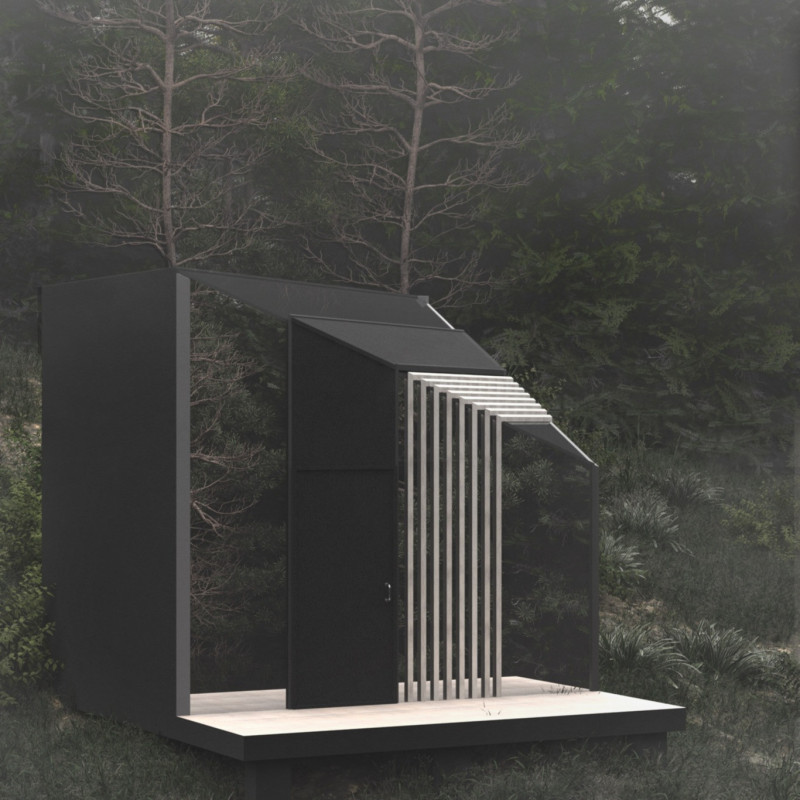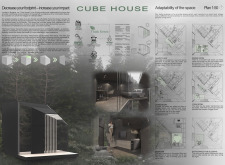5 key facts about this project
The Cube House represents a shift towards environmentally conscious living, fusing practicality with aesthetics. The form is characterized by a cube shape, promoting simplicity and efficiency, while maximizing natural light through generous glazing. This design philosophy supports a connection between indoor environments and the external landscape, encouraging interaction with nature.
Architectural Efficiency and Adaptability
A key feature of the Cube House is its adaptable interior layout. The design includes multi-functional spaces that can easily transform based on the occupants' needs. The living area features movable furniture and a wall-mounted folding table optimized for flexibility. In addition, the integration of a sofa bed allows the living room to serve as both a social space and a sleeping area. This adaptability minimizes wasted space while enhancing usability.
The project also places emphasis on personalization, allowing residents to curate their living environments. This is achieved through thoughtful organization of spaces, such as incorporating a yoga area that can double as an extra sleeping space. The emphasis on user engagement promotes a lifestyle that values efficiency and comfort.
Sustainable Materiality and Energy Efficiency
The choice of materials in the Cube House is integral to its sustainability agenda. The use of wood for flooring and furniture fosters a welcoming atmosphere while also being an environmentally friendly option. Steel frames provide structural integrity and support large glass panels, maximizing natural light and reducing the reliance on artificial lighting.
The extensive use of glazing enhances visual connectivity with the outdoors, effectively blurring the lines between inside and outside. Eco-friendly insulation materials ensure energy efficiency, further contributing to the overall sustainability ethos of the project. The integration of solar panels on the roof underscores the architectural commitment to renewable energy sources.
By prioritizing material sustainability, spatial efficiency, and user adaptability, the Cube House sets itself apart from conventional residential designs. This project aligns well with evolving architectural ideas that favor minimalism and ecological mindfulness.
Readers interested in deeper insights into the Cube House should explore the architectural plans, sections, and designs available for review. These elements provide a comprehensive understanding of the project’s layout, material selections, and design approaches that contribute to its unique character in modern architecture.























